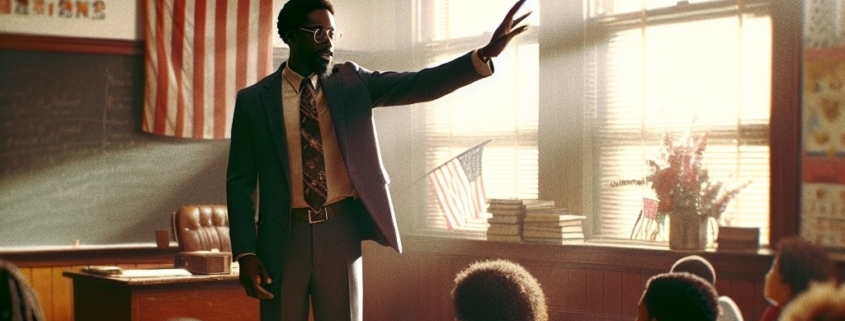Bridging the Gap: The Critical Need for Black Male Teachers in America’s Classrooms
The representation of Black male teachers in U.S. classrooms remains a critical issue, reflecting broader challenges in achieving diversity within the education system. Despite the universal values associated with teaching, the reality in the United States is starkly different, with Black male educators significantly underrepresented. This article explores the current landscape, the impact of Black male teachers, and initiatives aimed at increasing their presence in schools.
The Current Landscape
In the 2020-2021 school year, Black men comprised only 1.3% of the 3.8 million public school teachers in the U.S., despite making up 6.1% of the general population. The majority of public school teachers are white women, with white individuals constituting 79.9% of all teachers. This lack of diversity is particularly pronounced in leadership roles, where Black educators are even less likely to be found as principals or assistant principals.
Representation Statistics
| Demographic | Percentage of Teachers | Percentage of General Population |
|---|---|---|
| Black Men | 1.3% | 6.1% |
| Black Women | 4.8% | 6.5% |
| White Teachers | 79.9% | N/A |
The Impact of Black Male Teachers
The presence of Black male teachers has been shown to have a profound impact on students, particularly those from similar racial and ethnic backgrounds. Studies indicate that Black students who have at least one Black teacher by third grade are significantly more likely to graduate high school and enroll in college. Specifically, having one Black teacher increases the likelihood of graduating high school by 13% and enrolling in college by 19%, with these figures rising to 32% for college enrollment when students have two Black teachers.
Educational Outcomes
- Higher Academic Achievement: Black students taught by Black teachers achieve higher math and reading scores.
- Increased Graduation Rates: Exposure to a Black teacher reduces high school dropout rates by up to 39% for Black boys from low-income households.
- College Enrollment: Students are more likely to pursue higher education after being taught by Black educators.
Barriers and Challenges
Despite their positive impact, several barriers hinder the recruitment and retention of Black male teachers:
- Lack of Mentorship: Many Black male educators report a need for mentorship and community support to thrive in their roles.
- Systemic Inequities: Issues such as unequal pay and being pigeonholed into disciplinary roles discourage many from entering or remaining in the profession.
- Invisible Tax: The additional burden placed on Black male teachers to act as disciplinarians or role models due to their race and gender.
Initiatives and Solutions
Efforts are underway to address these challenges through targeted programs and policy reforms:
- Teach For America: This organization works with historically Black colleges and universities to recruit and retain Black educators through initiatives like the Black Educators Promise Initiative.
- Bowie State University: Their Bowie Black Male Educators Project aims to recruit, prepare, and support Black male educators through grants and mentorship programs.
- He Is Me Fellowship: This program provides professional development and mentorship for aspiring Black male teachers, aiming to build a pipeline from high school through higher education.
Key Programs
| Initiative | Focus | Impact |
|---|---|---|
| Teach For America | Recruitment and retention | Increased diversity among new educators |
| Bowie State University | Comprehensive support for educators | Improved educational outcomes for participants |
| He Is Me Fellowship | Professional development | Expanded pipeline for future educators |
Conclusion
The need for more Black male teachers in U.S. classrooms is urgent. Their presence not only benefits students academically but also enriches the learning environment through diverse perspectives and teaching styles. Addressing this issue requires a concerted effort from educational institutions, policymakers, and communities to create supportive environments that attract and retain these vital educators. By doing so, we can work towards a more equitable educational system that reflects the diversity of our society.
“`


